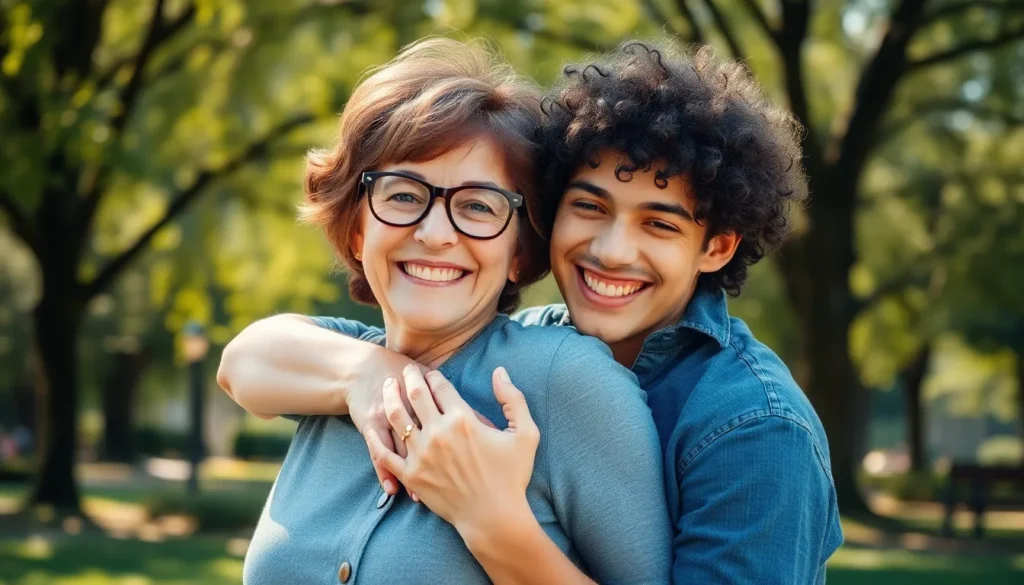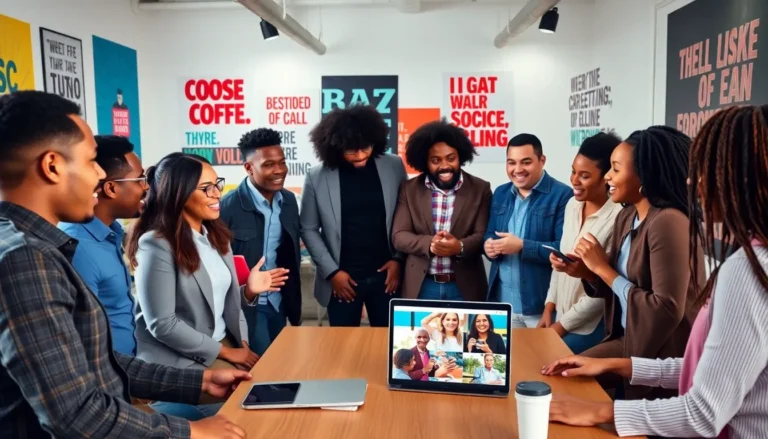Adoption reunions can feel like a rollercoaster ride—exciting, nerve-wracking, and occasionally leaving you wondering if you should’ve eaten that extra slice of cake beforehand. For many, the prospect of reconnecting with birth families or adoptive siblings brings a whirlwind of emotions. It’s a chance to bridge the gap between past and present, and let’s face it, who wouldn’t want to meet the people who gave them their fabulous genes?
These reunions are not just about sharing DNA; they’re about sharing stories, laughter, and maybe a few awkward moments. Whether it’s the emotional hugs or the surprising family resemblance, adoption reunions offer a unique blend of joy and discovery that can transform lives. So buckle up as we dive into the heartwarming world of adoption reunions, where every encounter is a potential treasure trove of memories and connections waiting to be uncovered.
Table of Contents
ToggleUnderstanding Adoption Reunions
Adoption reunions encompass emotional encounters that often bring hope and closure. These gatherings allow individuals to reconnect with their birth families or adoptive siblings, fostering bonding over shared experiences.
Definition and Importance
Adoption reunions refer to the meetings between adoptees and their birth families or adoptive relatives. These encounters hold multi-faceted importance in the lives of those involved. First, they facilitate the exchange of personal histories and emotional narratives. Significant information regarding family health and ancestry often emerges during these reunions. Understanding personal origins can aid adoptees in forming identity. Lastly, birth families and adoptees often seek resolution, healing emotional wounds through honest communication.
Types of Adoption Reunions
Adoption reunions can take various forms, each with unique characteristics. First, closed reunions occur without prior contact, making initial meetings more intense. Second, open reunions involve ongoing communication, fostering stronger relationships over time. Third, intermediary reunions rely on third parties, such as social workers, to facilitate initial contact. Finally, virtual reunions have gained popularity through technology, allowing connections via video calls and social media. Each type of reunion serves different needs, emphasizing the diversity in adoption experiences.
Emotional Aspects of Adoption Reunions

Adoption reunions evoke a range of emotions, shaping the experiences of all involved. These gatherings often serve as pivotal moments for individuals and families.
Joy and Anticipation
Joy permeates the atmosphere of adoption reunions, illuminating the significance of reconnecting with lost family members. Anticipation builds as adoptees prepare for these potentially transformative meetings. Families often share excitement about reuniting and learning about each other’s lives. They express hope for meaningful connections, reminiscing about shared backgrounds and life stories. Moments of laughter and celebration frequently occur, reinforcing bonds. The prospect of discovering one’s roots heightens this emotional intensity, making reunions memorable experiences.
Anxiety and Uncertainty
Anxiety can overshadow the joy of adoption reunions, creating tension for participants. The fear of rejection or disappointment often weighs heavily, as individuals contemplate their expectations. Uncertainty about family dynamics, conversations, and emotional responses often adds stress. Gathering details about past experiences can evoke lingering questions and doubts. Adoptees frequently wonder how their biological families perceive them, creating a complex emotional landscape. Such feelings highlight the importance of open communication, allowing space for honesty and reassurance during these critical encounters.
Preparing for an Adoption Reunion
Preparing for an adoption reunion involves careful planning and emotional readiness. Focusing on the unique aspects of each reunion can enhance the overall experience.
Research and Gather Information
Gathering information about biological relatives or adoptive families is crucial. Start by collecting relevant documents, such as birth certificates and medical histories. Learning about family backgrounds can reveal health issues or shared traits. Connecting with adoption agencies or support groups can provide additional insights. Utilize online resources to find valuable articles and personal stories. Knowing what to expect can ease anxiety and pave the way for meaningful conversations.
Setting Healthy Boundaries
Establishing boundaries is essential for a positive reunion experience. Determine what subjects feel comfortable discussing, such as family histories or personal experiences. Communicate these limits clearly to all parties involved. Respecting emotions and triggers fosters a supportive atmosphere. Agreeing on the amount of time spent together can help manage expectations. Understanding that everyone might not share the same level of openness aids in creating a respectful dialogue. Balancing connections while maintaining personal space enhances the potential for lasting relationships.
Navigating the Reunion Process
Navigating the reunion process involves careful planning and empathetic communication. Participants must approach initial contact with sensitivity and an open mind.
Initial Contact and Communication
Initial contact typically occurs via email, social media, or through an intermediary. Choosing a method that feels comfortable creates a supportive environment. It’s essential to express genuine interest in the other person’s feelings and experiences. Sharing personal histories fosters trust and understanding, encouraging a productive dialogue. Setting clear intentions helps both parties navigate emotions during initial conversations. If either party feels overwhelmed, establishing a follow-up timeline can ease anxiety. Open questioning allows for exploration of topics without pressure, enabling both sides to progress at their own pace.
The Reunion Meeting
The reunion meeting holds immense potential for connection and discovery. Choosing a neutral and comfortable location helps set a positive tone for the encounter. Prior discussions on desired topics can prevent misunderstandings. Allowing time for both parties to share their stories often leads to emotional breakthroughs. Participants should remain flexible, as unexpected emotions may arise. Building a foundation of shared experiences fosters deeper connections and understanding. Gratitude for the opportunity to meet can create a warm atmosphere. Respecting each other’s boundaries during the meeting further enhances the experience. Adoptees often leave these gatherings with a renewed sense of identity and belonging.
Adoption reunions offer a unique opportunity for individuals to explore their roots and build meaningful connections. These encounters can be transformative experiences that foster a sense of belonging and identity. While the emotional landscape may be complex and filled with ups and downs, the potential for joy and understanding makes each reunion worthwhile.
By approaching these meetings with empathy and openness, participants can navigate the challenges and celebrate the connections that emerge. Ultimately, the journey of reunion is one of discovery and healing, paving the way for lasting relationships and shared stories that enrich everyone involved.










